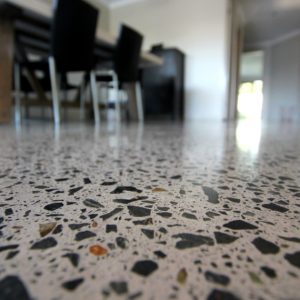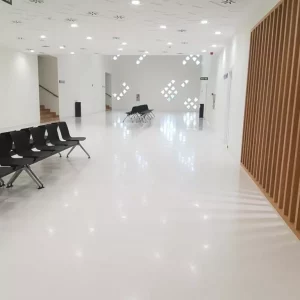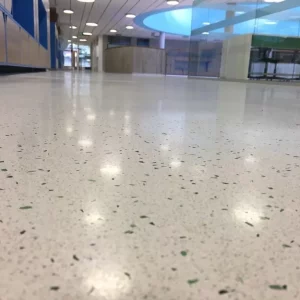Are polished concrete floors cold?
I know what you’re thinking – polished concrete floors are cold. When it comes to concrete floors, there is often a big misconception that they are cold or ‘industrial like’. With low temperature and wet winters (and often summers here too), nobody wants an uncomfortable and uninviting home. We at SPCS are constantly asked “Are polished concrete floors cold?”. It is a valid concern and appears to be one reoccurring question in many individuals’ minds.
Fortunately, unbeknownst to many, concrete flooring is a great and suitable option for all homes, any month throughout the year. Let us explain why.
- Polished concrete is an excellent insulator
Unlike tiles or timber, which have a low thermal mass, a concrete slab possesses a high thermal mass. Concrete absorbs, stores and releases temperatures slowly. This works by heat being absorbed from direct sunlight during the day and concrete storing the heat within the ground before releasing it slowly at night. This is known as solar gain.
If your house currently has timber flooring, then you know how cold it can get in winter and how hot it can become in the summer. Throughout cold evenings, warmth will be retained within concrete floors keeping you and your home snug. Sun rays hit the indoor ground through windows, therefore, having a greater number of windows in your house will generate more heat absorption and at a rapid rate.
The higher the number of direct sun rays hitting the indoor ground through windows, the greater amount of heat that will be able to be absorbed quickly.
On the other hand, during the summer when temperatures are higher, if you close your blinds or curtains, concrete will add coolness across the building. Natural ventilation will also form cooler air within the home.
However, do not be deterred from this style of flooring if your home does not receive much natural sunlight. Polished Concrete flooring can receive radiance of heat through fireplaces, heaters and wood burners. Another option is having a radiant floor heating system which can do double-duty in the summer by filling its piping with chilled water. Heating and cooling a house this way also improves air quality, because unlike a forced air system, there’s nothing blowing dust and pollutants through the air. This also allows each room to be controlled separately.
- Save on future energy
A cold home can result in huge energy bills if there’s a need for heating 24/7, an extra cost that many of us do not need. Through concrete’s ability to help your home retain heat, money can easily be saved through the regulation of temperature. The thermal mass of concrete works on a 12-hour time delay. This means that by the time it gets cold the following morning, the flooring begins to heat up again, forming a continuous cycle of heating.
There is no need for you to compromise warmth and comfort. Although polished concrete floors may look cold, these can be balanced out by colour coordination and strategically placed rugs and furniture. Concrete can also give an edgy look to a home, with built in character. Having this type of floor can help you create an inviting home, keeping you warm or cool, depending on the temperature outdoors. It’s a win-win.


